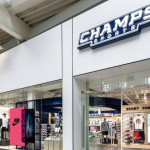Large national outdoor retail chains saw a banner year in 2005, with higher than expected comps that trickled down to the bottom line. The two largest specialty outdoor retailers in the country, REI and L.L. Bean, were able to capitalize on great winter conditions throughout much of the country and use their integrated multi-channel selling strategy to its full potential. In addition, the two largest chains that have a considerable outdoor presence, Dicks Sporting Goods and The Sports Authority, have finally put their integration difficulties behind them and were able to do what they do best this year. Sell.
Dick's Sporting Goods saw the fiscal fourth quarter end with a bang, as comparable store sales blew by expectations for the quarter. The 4.1% comp store sales gain, which came on top of a 2.6% increase in Q4 last year, was fueled by strength in athletic footwear and apparel and a number of outdoor categories. The womens business continues to be strong across multiple categories. DKS wont start to comp the former Galyans stores until the fiscal second quarter of this year.
Company chairman and CEO Ed Stack said they did end the year with a bit more winter merchandise than they would have liked, but said it wasnt necessarily a bad thing though, given the colder weather in February. He also said they have seen some expansion in average unit retail in footwear, thanks to growth in the running category and the launch of the Nike Air Max 360 shoe. Stack said that womens is growing as a percent of the total apparel business.
The average ticket out the door was up about 3% for the quarter, but average units sold were down approximately 3%. Mr. Stack said the outdoor business, which had become a bit more promotional at Gander Mountain, still comped positive for the second consecutive quarter. He also said they had “terrific success with The North Face this past season and are planning to expand the TNF business.
Private label sales represented 11.7% of total sales in the fourth quarter versus 9.1% of sales in the year-ago period. For the year, private label contributed 11.9% of total sales compared to 8.6% of sales in the prior year. Stack said private label commitments will expand in the outdoor hardlines business.
Net sales for the fourth quarter, ended January 28 increased 7.8% to $849.5 million from $788.0 million in the year-ago period. Gross margins improved 160 basis points to 30.3% of sales, compared to 28.7% of sales in Q4 last year. Merchandise margins were the main driver in the GM gain, offset a bit by higher transportation costs caused by fuel surcharges.
Net income also exceeded estimates, increasing 27.6% to $54.0 million, or $1.00 per diluted share, for the period, compared to $42.3 million, or 79 cents per diluted share, in the year-ago quarter. Excluding $7.5 million in after-tax merger integration costs from the prior year, net income would have increased 24.8% from Q4 of 2004.
Mr. Stack said that the marketing and advertising programs supporting the former Galyans stores have been synchronized with the Dicks stores since October and are expected to perform much like any other new Dicks store. DKS opened 26 new stores, relocated four stores, and closed five stores in connection with the Galyan's acquisition during the year for a total of 255 stores with approximately 14.7 million square feet in 34 states at year-end.
Inventories were up 2.5% at year-end on a per square foot basis.
Looking ahead, DKS expects to see EPS in the range of 15 cents to 17 cents per share in the fiscal 2006 first quarter on a 3% to 5% comparable store sales gain. The earnings estimate, which represents flat growth versus the year-ago quarter at the 16 cents mid-point, includes seven cents a share for stock options expenses.
For the full year, the retailer is forecasting EPS in the $1.77 to $1.81 per share range on a 3% comp store sales gain. The full year estimate, which includes 25 cents per share in stock option expenses, represents a 31% to 34% increase in EPS versus 2005. The increase is roughly 20% on a like-for-like basis. They expect to open 40 stores in fiscal 2006, with six of the stores planned in the two-story format and only a few of the total stores planned for west of the Mississippi.
The Sports Authority, Inc. took the opportunity afforded it with its pending move to a private entity as the company offered little detail on a pretty successful fiscal fourth quarter and full year. Management did not participate in the traditional analyst and investor conference call following the release of preliminary results for the periods ended January 28. The ability to run stealthy over the next few years as it makes investments in improving overall performance will be an important step in the next phase of the business.
Comparable stores sales for the fourth quarter outpaced the gain for the year, increasing 2.4% for the period compared to a 2.2% comp store sales decline in Q4 2004. Total sales increased 3.8% to $741.1 million in Q4 from $713.8 million in the year-ago period. The company said it had “strong sales performances in active and outdoor apparel, fitness and team sports.”
TSA bested its EPS guidance of $1.07 per share for the quarter posting a 17.7% increase in net income to $29.8 million, or $1.10 per diluted share, for the period, compared with $25.3 million, or 96 cents per diluted share, in the year-ago quarter. The increase was due in part to a 60 basis point improvement in gross margins that rose to 29.3% of sales in Q4 versus 28.7% of sales in the prior year period as well as cost controls that kept SG&A flat at 22.1% of sales.
The retailer said that merchandise inventories were down 9.9% on a per square foot basis compared to the prior year-end, while long-term debt was reduced by $69.2 million versus year-end 2004.
TSA expects to open twelve new stores and close three stores during fiscal 2006.
Looking ahead, TSA sees diluted EPS for fiscal 2006 between $2.35 and $2.40 per share on a 2% comp store sales increase. The forecast excludes any impact from the proposed MBO/acquisition by an investor group led by Leonard Green & Partners, L.P. and TSA management.
Gander Mountain managed to impress Wall Street with fourth quarter earnings that far outstripped previous guidance and consensus estimates. However, the hunt/fish retailer is still seeing difficult comparisons to previous performance at many of its locations with comparable store sales dropping 7.4% in the quarter and 6.0% for the fiscal year. Nonetheless, Gander management was able to pull off an impressive quarter by reigning in expenses and boosting the bottom line.
Fourth quarter 2005 sales increased 18% to $280.8 million while store operating expenses decreased one full percentage point to 14.6% of sales and general and administrative expenses declined 30 basis points to 3.2% of sales. This helped income from operations increase 37% to $26.0 million and net income jump 26% to $22.2 million, compared to $17.5 million for the fourth quarter of fiscal 2004.
The large decline in comparable store sales was said to occur mainly during the month of January, when Gander decreased its seasonal promotional activity and worked to boost gross margin dollars. This effort hurt the top-line but improved the companys profitability. November and December comps were said to have been down in the low single digits. During a conference call with analysts and the media, Gander management said that competition and cannibalization negatively impacted comps by roughly one to three percentage points. However, stores that have reached the 26 to 29 month age range have started to show positive comps. Long-term, GMTN expects to operate with low-singles increases in their same-store sales.
Gander Mountain has based much of its top-line growth on its ability to expand its retail footprint rapidly. Over the past two years, the company has opened 19 stores per year, and currently operates nearly 100 locations. Moving forward, Gander will slow down its new store opening schedule in an effort to focus on improving the performance of its existing retail base and enhance the bottom line. In 2006, Gander will only open six to eight new stores with two of those being replacement stores. In spite of the slow-down in their store opening strategy, Gander remains committed to its stated long-term goal of 300 U.S. stores.
For the year, pre-opening expenses were down 20% per store. Most of the companys new stores will likely be in the southern states. Gander hopes that this southern expansion will reduce their reliance on Q3 and Q4 sales and at the same time reduce their seasonal operating loss during the first quarter.
Gander management continues to keep their assortment heavily weighted towards national brands, but they do see increasing their percentage of private label offerings. Last year, ganders private label was 8.7% of sales while this year it was 12.5% of sales. The company sees increasing this number to 15%-20%. Gander Mountain management did not offer specific guidance for the coming quarter or year.
L.L. Bean reported net sales of $1.47 billion for its 2005 fiscal year, which ended February 26. This was a 4% increase over 2004 net sales of $1.41 billion. For the first time this year, L.L. Beans e-commerce site became its primary sales channel, out-stripping brick & mortar and catalog sales during the month of December. Online sales increased 28% for the year. The retailer also added more new customers during 2005 than it has in its history. The company also announced that its Board of Directors approved a cash award of 8% of annual pay to 4,700 eligible employees.
Chris McCormick, L.L. Beans President and CEO, said, “We made impressive strides and grew the business in the face of significant challenges. The repercussions of major world events such as Hurricane Katrina and their role in rising energy costs and consumer confidence in general created a lot of uncertainty for all retailers. In response to these conditions we implemented marketing contingencies that included an unconditional free shipping promotion in November and December. While very risky and rather costly, it turned out to be a risk worth taking.”
Last month L.L. Bean announced several new developments that will unfold in 2006. Among them, the company announced plans to open 5 new stores over the next 18 months in the states of Massachusetts, Pennsylvania, and Connecticut. The company also has plans to expand operations in its hometown of Freeport, Maine, including a 330,000 square foot expansion to its distribution operation; property acquisition on Main Street that will enable a revamp of its retail campus; and the intent to use property it owns to build a parking garage and 100,000 square feet of non-L.L. Bean retail space.
Last month, REI pointed to favorable weather throughout much of the country and a 10% increase in co-op active membership for an annual sales increase of 15% to $1.02 billion in 2005 from $887 million in the previous year. (See BOSS_0609) This is the first time in the co-ops 67-year history that it has surpassed the $1 billion milestone. Gross margin remained relatively stable year-on-year, with a 10 basis point increase to 43.9% of sales. Operating and administrative expenses declined slightly as a percentage of sales to 35.5% in 2005 compared to 35.7% in 2004.
For the year, REIs operating income increased 19.4% to $86 million compared to $72 million last year. This represents an 8.4% operating margin in 2005 compared to 8.1% in 2004. Net income outpaced sales two-to-one and increased by 29.3% to $32.7 million compared to $25.3 million last year.
| Select U.S. Sporting Goods Retailers | ||||||||||||
| Full Year 2005 Results | ||||||||||||
| ($ millions) | Dicks Sporting Goods | The Sports Authority | REI, Inc. | Gander Mountain | ||||||||
| 2005 | 2004 | Change | 2005 | 2004 | Change | 2005 | 2004 | Change | 2005 | 2004 | Change | |
| Total Sales | $2,625 | $2,109 | +24.4% | $2,509 | $2,436 | +3.0% | $1,022 | $887.8 | +15.2% | $804.5 | $644.0 | +24.9% |
| Gr. Profit % | 28.1% | 27.8% | +30 bps | 28.2% | 27.9% | +30 bps | 43.9% | 43.8% | +10 bps | 23.9% | 25.5% | -160 bps |
| SG&A % | 21.2% | 21.0% | +20 bps | 23.7% | 23.8% | |||||||













